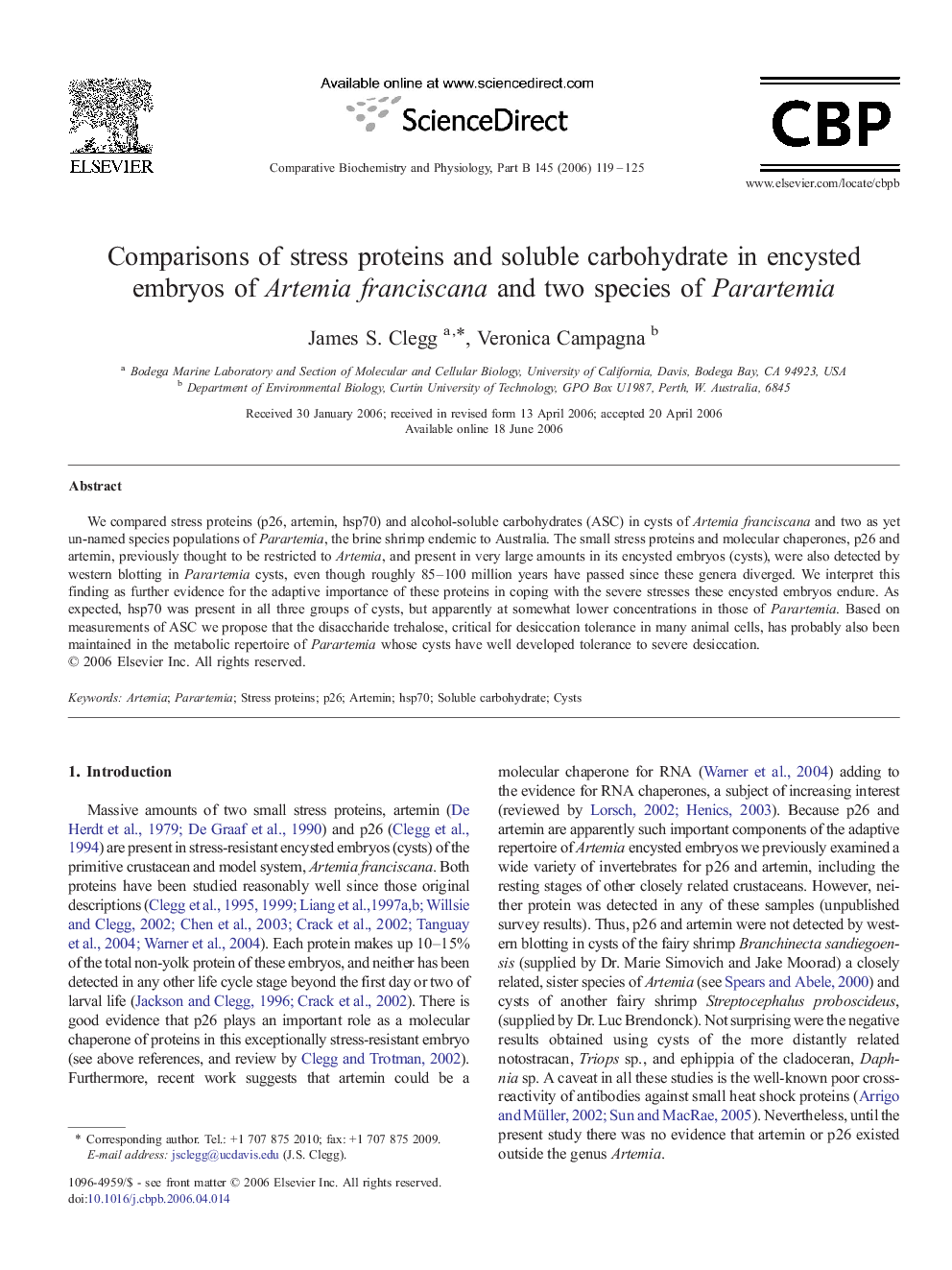| Article ID | Journal | Published Year | Pages | File Type |
|---|---|---|---|---|
| 1976751 | Comparative Biochemistry and Physiology Part B: Biochemistry and Molecular Biology | 2006 | 7 Pages |
We compared stress proteins (p26, artemin, hsp70) and alcohol-soluble carbohydrates (ASC) in cysts of Artemia franciscana and two as yet un-named species populations of Parartemia, the brine shrimp endemic to Australia. The small stress proteins and molecular chaperones, p26 and artemin, previously thought to be restricted to Artemia, and present in very large amounts in its encysted embryos (cysts), were also detected by western blotting in Parartemia cysts, even though roughly 85–100 million years have passed since these genera diverged. We interpret this finding as further evidence for the adaptive importance of these proteins in coping with the severe stresses these encysted embryos endure. As expected, hsp70 was present in all three groups of cysts, but apparently at somewhat lower concentrations in those of Parartemia. Based on measurements of ASC we propose that the disaccharide trehalose, critical for desiccation tolerance in many animal cells, has probably also been maintained in the metabolic repertoire of Parartemia whose cysts have well developed tolerance to severe desiccation.
